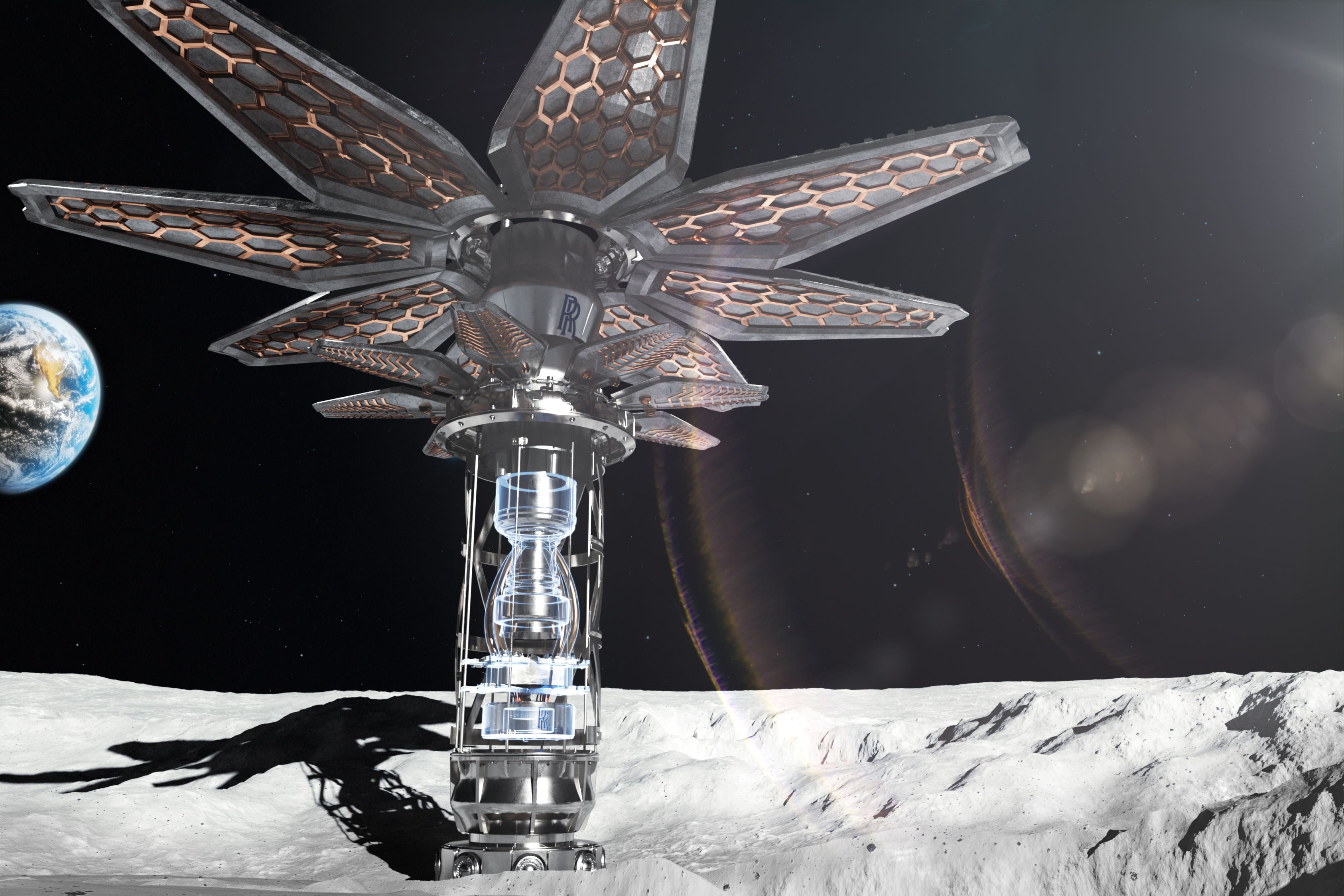Rolls Royce building nuclear reactor to enable humans to live on the Moon
All space missions depend on a power source, to support systems for communications, life-support and science experiments

Your support helps us to tell the story
From reproductive rights to climate change to Big Tech, The Independent is on the ground when the story is developing. Whether it's investigating the financials of Elon Musk's pro-Trump PAC or producing our latest documentary, 'The A Word', which shines a light on the American women fighting for reproductive rights, we know how important it is to parse out the facts from the messaging.
At such a critical moment in US history, we need reporters on the ground. Your donation allows us to keep sending journalists to speak to both sides of the story.
The Independent is trusted by Americans across the entire political spectrum. And unlike many other quality news outlets, we choose not to lock Americans out of our reporting and analysis with paywalls. We believe quality journalism should be available to everyone, paid for by those who can afford it.
Your support makes all the difference.Rolls-Royce is building a nuclear reactor let humans live on the Moon.
The UK Space Agency will help fund work on the technology, intended to allow the lunar surface to be more habitable.
The project will examine how nuclear power can be used to support human life on the Moon.
Scientists and engineers at the British company are working on the Micro-Reactor programme to develop technology that will provide power needed for humans to live and work on Earth’s natural satellite.
All space missions depend on a power source, to support systems for communications, life-support and science experiments.
Experts suggest nuclear power could potentially dramatically increase the length of lunar missions.
The UK Space Agency has announced £2.9 million of new funding for the project, which will deliver an initial demonstration of a UK lunar modular nuclear reactor.
Space exploration is the ultimate laboratory for so many of the transformational technologies we need on Earth: from materials to robotics, nutrition, cleantech and much more
This comes after a £249,000 study funded by the UK Space Agency in 2022.
Science minister George Freeman said: “Space exploration is the ultimate laboratory for so many of the transformational technologies we need on Earth: from materials to robotics, nutrition, cleantech and much more.
“As we prepare to see humans return to the Moon for the first time in more than 50 years, we are backing exciting research like this lunar modular reactor with Rolls-Royce to pioneer new power sources for a lunar base.
“Partnerships like this, between British industry, the UK Space Agency and government are helping to create jobs across our £16 billion Space Tech sector and help ensure the UK continues to be a major force in frontier science.”
Rolls-Royce plans to have a reactor ready to send to the Moon by 2029.
It will work with a variety of collaborators including the University of Oxford, University of Bangor, University of Brighton, University of Sheffield’s Advanced Manufacturing Research Centre (AMRC) and Nuclear AMRC.
This funding will bring us further down the road in making the Micro-Reactor a reality, with the technology bringing immense benefits for both space and Earth
Compared to other power systems, a relatively small and lightweight nuclear micro-reactor could enable continuous power regardless of location, available sunlight, and other environmental conditions.
Abi Clayton, director of future programmes for Rolls-Royce said: “This funding will bring us further down the road in making the Micro-Reactor a reality, with the technology bringing immense benefits for both space and Earth.
“The technology will deliver the capability to support commercial and defence use cases alongside providing a solution to decarbonise industry and provide clean, safe and reliable energy.”
Dr Paul Bate, chief executive of the UK Space Agency, said: “This innovative research by Rolls-Royce could lay the groundwork for powering continuous human presence on the Moon, while enhancing the wider UK space sector, creating jobs and generating further investment.”
Additional reporting by agencies



Join our commenting forum
Join thought-provoking conversations, follow other Independent readers and see their replies
Comments